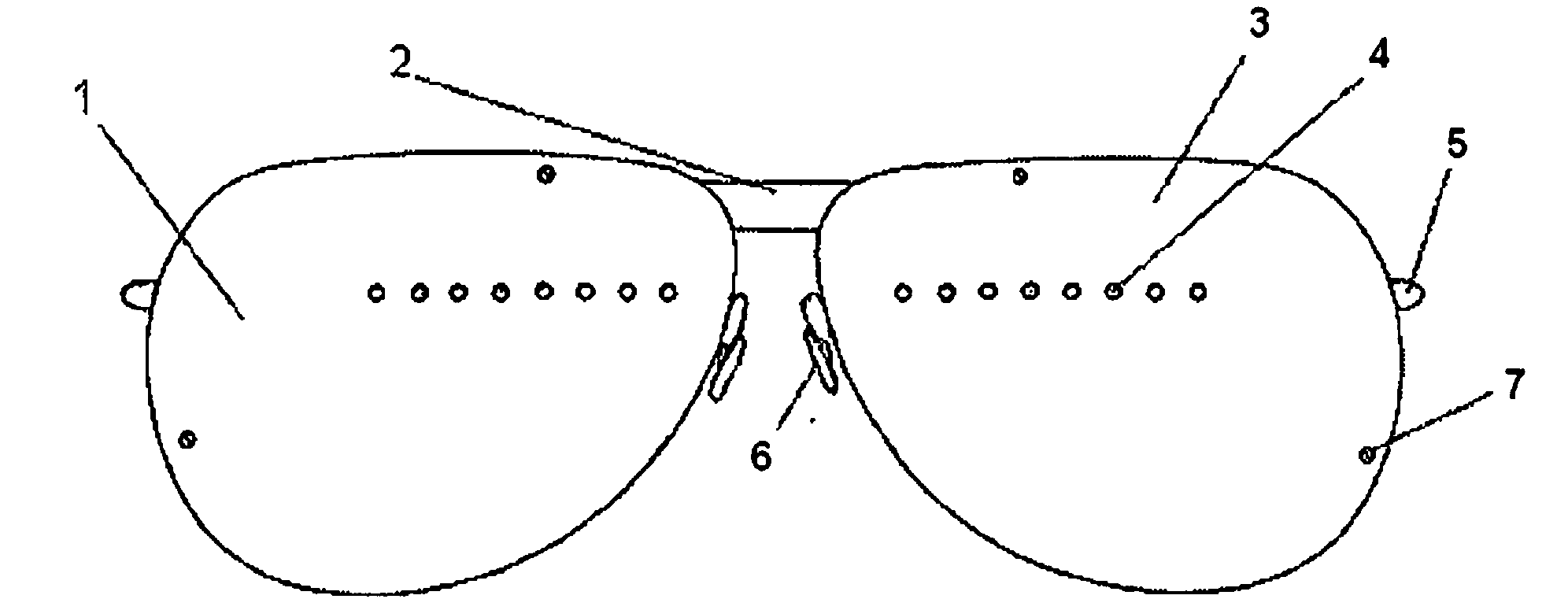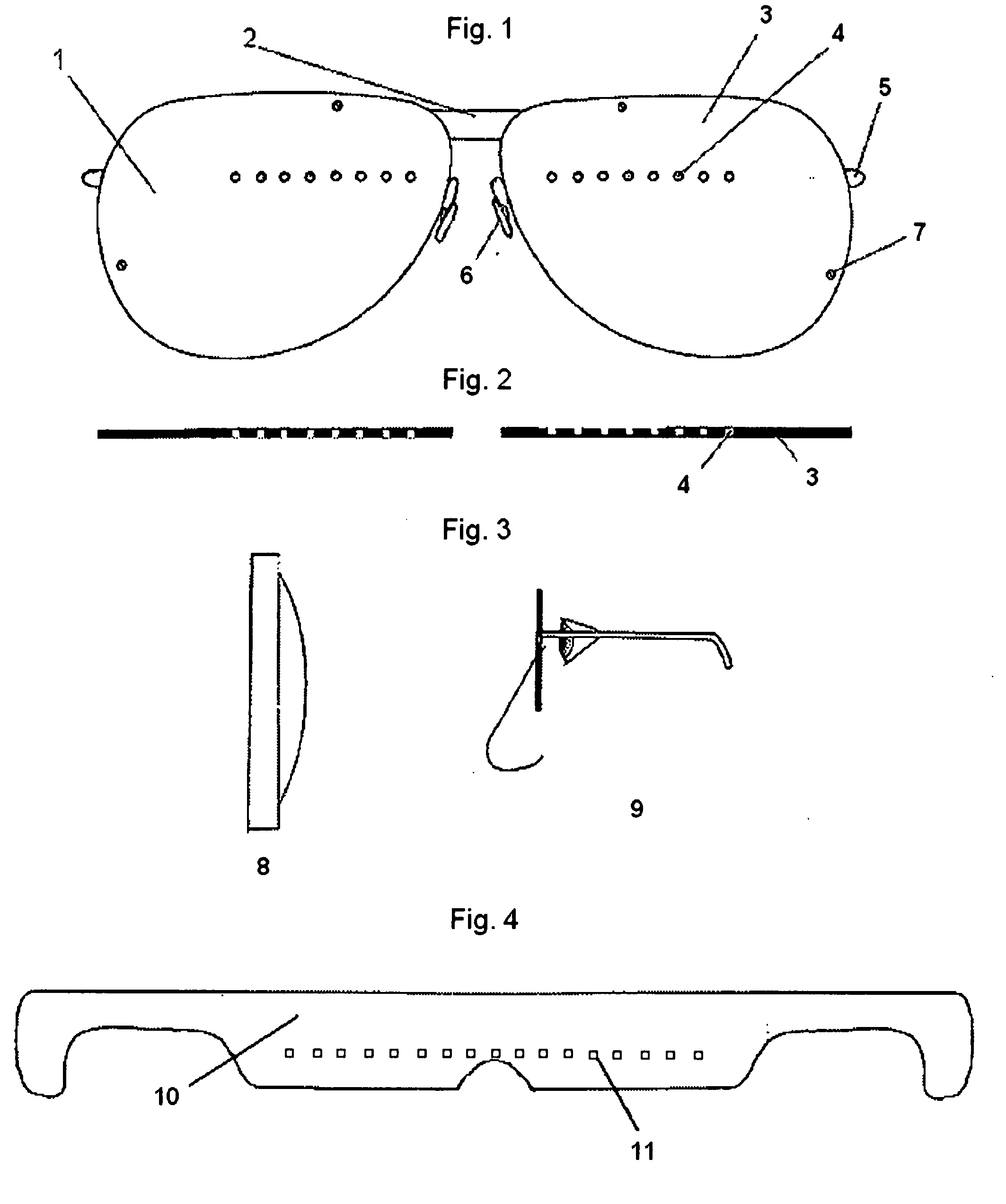Apparatus for viewing two-dimensional images in 3-D
- Summary
- Abstract
- Description
- Claims
- Application Information
AI Technical Summary
Benefits of technology
Problems solved by technology
Method used
Image
Examples
Embodiment Construction
[0048]The main portion of this patent is for an opaque surface element with a single horizontal row of openings or non-opaque areas positioned on the opaque surface level with the direction of view (1) that will allow viewers to watch 2-D movies or images in 3-D. The opaque surface element may serve as the lens or lenses of a pair of eyeglass frames (FIG. 1), or the lens or lenses of a hand held frame, or attached to or made part of prescription lenses or glasses. The opaque surface element may also be wide enough to cover both eyes (10), and the row of openings or non-opaque areas wide enough to cover both eyes (11) or divided into two sets of single row openings or non-opaque areas with one set each positioned in front of each eye. The sides may extend to become earpieces(10) or a band for securing the device to the head.
[0049]Nonopaque openings may be any shape (11) and of equal size, sizes ranging from 1 / 32 inch to ¼ inch. The spacing of the openings or nonopaque areas in each l...
PUM
 Login to View More
Login to View More Abstract
Description
Claims
Application Information
 Login to View More
Login to View More - R&D
- Intellectual Property
- Life Sciences
- Materials
- Tech Scout
- Unparalleled Data Quality
- Higher Quality Content
- 60% Fewer Hallucinations
Browse by: Latest US Patents, China's latest patents, Technical Efficacy Thesaurus, Application Domain, Technology Topic, Popular Technical Reports.
© 2025 PatSnap. All rights reserved.Legal|Privacy policy|Modern Slavery Act Transparency Statement|Sitemap|About US| Contact US: help@patsnap.com


